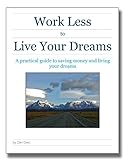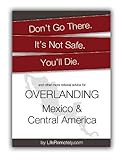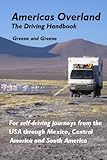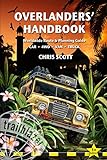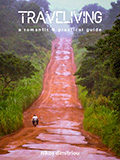Overland Ecuador Travel
Currency to display:
Contents
At the border
Correct as of: April 2010
Required Paperwork
- Passport of registered owner (original and one copy)
- Vehicle registration (original and one copy)
- Drivers license (original and one copy)
Process at border
- The owner of the vehicle gains entry at Immigration (Migración), usually with a tourist card, including a stamp in their Passport.
- The owner must show the new passport stamp, original vehicle registration and original Drivers license to Customs (Aduana).
- The owner is issued a temporary import permit for the vehicle.
Cost of entry
Free.
Permitted length of stay
90 days.
Extension of stay
Extensions were previously permitted, they are currently not permitted. To extend your stay, you must exit Ecuador and return. Be careful, however, Ecuador is one of the strictest countries in South America with regards to how much time foreigners are permitted to be in the country in a calendar year. Check carefully with immigration.
Storing a vehicle and temporarily leaving the country
Unknown.
Describe if/how a vehicle can be stored, and for how long.
Also mention if the owner / temporary importer can leave the country while the vehicle is in storage.
Exiting with a vehicle
- The registered owner presents the temporary import paper to customs.
- The registered owner is stamped out of Bolivia at immigration.
Overland Essentials
Vehicle Insurance
Insurance requirements
Insurance is mandatory in Ecaudor, and Police will ask to see it. Like many South American countries, the insurance is called SOAT (Seguro Obligatorio Automóviles Transito). It is difficult, though not impossible to purchase because the vehicle will not be in the Ecuadorian computer system.
Cost of insurance
Varies with the size of vehicle. Around $60.00 USD for three months for a 4x4.
Where to purchase insurance
Insurance brokers are common in even the small towns. Ask around for "SOAT"
Driving license
Technically an International Driving Permit is required.
In reality, showing a license from anywhere in the world seems to be good enough.
Driving side of road
Right,
Right hand drive vehicles are permitted without problem.
Mandatory items in vehicle
None.
Roads
General Road quality
Roads in Ecuador vary greatly. Highways are all sealed and good quality. Small roads into the central highlands are cobblestone to prevent mud in the rainy season, and as such are extremely slow going. Gravel roads can be anywhere from very good to impassable mud-pits depending on the time of year.
Road signs
Road signs are common on highways and in towns. It's usually not too difficult to find signage to get where you are going.
Toll roads
The Pan American Highway is tolled through Ecuador. Expect to pay Error in price tag: The cost attribute must be specified. every 50km or so.
Bribery
Police bribery does happen in Ecuador, though it's by no means rampant, so don't assume Police are always trying to bribe you.
See the bribery tips page for advice.
Checkpoints
Police checkpoints are common in Ecuador. You will be asked to present your Passport, Vehicle registration, drivers license, the temporary import permit you were issued at the border and your SOAT insurance. Driving without the required SOAT insurance is a sure-fire way to encounter bribery.
Traveling with pets
Unknown.
List the entry requirements and anything else required to travel with a pet.
Gasoline / Petrol / Diesel
Last updated: November 8, 2010
Price
Currency and unit to display:
| Gasoline Grade | Price |
|---|---|
| Regular | $1.47 USD per Gallon (US) |
| Premium | $2.00 USD per Gallon (US) |
| Diesel | $1.03 USD per Gallon (US) |
Gasoline Availability / Frequency
Gas stations are extremely common in Ecuador, and shortages are not common. There is a law that limits the amount of gasoline you can purchase in one transaction to $10.00 USD when immediately next to the Colombian border. You can get around this by going to a couple of different gas stations.
Gasoline Quality
Gasoline and Diesel are generally thought of as good quality, especially when bought from the name-brand stations like Shell. The sulfur content of diesel is unknown.
External information about gasoline
Unknown.
Link to external websites with price & quality information, if available.
Safety / Security Considerations
Driving at night
Driving at night is not recommended.
- Extremely poor road quality means potholes, washouts and other hazards are common.
- Dangerous driving such as tailgating, overtaking around blind corners and excessive speeding are common.
- There can be many objects on and around the road that are nearly impossible to see at night, such as livestock, people, slow moving carts, cars with no lights, etc.
Vehicle parking
Parking vehicles on the street in smaller towns during the day is typically OK. Find a secure parking lot in big cities and at night. Cost is around 5 Bolivianos per night.
Special driving considerations
The roads in Bolivia are notoriously bad, so be extra watchful for road hazards like potholes, washouts and bad roads in general.
Drugs and related problems are increasing around Santa Cruz, probably the most dangerous part of Bolivia. The roads to Brazil in the East are more dangerous than elsewhere in the country.
Security advisories and information
- Country Specific Information - U.S. Department of State
- Travel Reports and Warnings - Foreign Affairs and International Trade Canada
- Travel advice by country - Foreign and Commonwealth office (U.K.)
- Travel Advice for Ecuador - Australian Department of Foreign Affairs and Trade
Camping
Camping is not common or popular in Bolivia, though a few hostels in touristy areas have camping to cater for backpackers.
Prices for camping at hostels fluctuates with the tourist seasons - check a backpacker guide book.
Many Overland travelers roadside camp on the Salar de Uyuni and further South, and consider it safe enough. Note the overnight temperatures can be extremely low.
Camping guide books
No specific book exists, though the usual backpacker guide books mention when a hostel has camping facilities.
Drinking water
Tap water in Bolivia is not safe to drink. Every corner store sells 1 and 2 liter bottles, while 20 liter bottles are extremely difficult to find (possibly only available in La Paz).
Paper maps
Maps of Bolivia are difficult to find, and road conditions change daily. Purchase maps before arriving in Bolivia.
GPS
- Open Street Map: Appears to have good coverage.[1]
- Garmin: No map of Bolivia.[2]
- TomTom: No map of Bolivia. [3]
Directions and GPS co-ordinates for camping, propane, gas, repairs, etc.
- Camping Sites: Bolivia - Detailed list of campsites and propane filling with description, directions and GPS co-ordinates. Some at hotels (lists facilities and price), some roadside and free.
- Campsite Listing - South America | PanAm Notes - List of campsites, with directions and GPS co-ordinates. Some at hotels (lists facilities and price), some roadside and free.
- Andes Expedition camping Locations - List of campsites, with basic directions and GPS co-ordinates. Mostly free sites.
- Camping Log 2: South America - List of campsites, shopping, fuel, propane and border crossings with excellent descriptions and GPS co-ordinates.
- Hackney Travel SA Waypoints - Raw GPS data (in gdb or gpx format) for waypoints (including campsites, fuel, repairs, propane and more)
- The Silk Road Motocaravan Network - Raw GPS data for waypoints (camping, gas, propane, points of interest and more)
Overland Travel Interest
Special Overland interests
- The Salar de Uyuni - The breathtaking Salt Flats are high on the list of every Overlander traveling across South America. Purchasing gas in Uyuni can be difficult depending on the time of year, day of week and who serves you. When supply is limited you will almost certainly be charged the "tourist" rate (double the normal price) and will not be allowed to fill containers. Plan accordingly. Enter the salt flats in Colchani, a short but extremely dusty and bumpy ride from Uyuni. When entering or exiting the salt flats it's important to drive on the most worn tracks to avoid sinking into the very soft salt/mud/muck. Following the black tire tracks on the actual salt is the easiest way to navigate. Many people have also put their GPS tracks online so you can be sure to go the right way. [4] After leaving the salt flats, be sure to thoroughly wash the underside of your vehicle to remove the salt.
- South to Chile through the Altiplano - Overlanders looking for further adventure can continue South from the Salar, cross the Atcama desert and finally arrive in Chile. The total distance between gas stations is approximately 615km[5], and takes around 1 week. There a no official gas stations along they way, only occasionally people selling on the side of the road from a container. Food and water are equally as scarce, so you must be prepared. Temperatures swing wildly from hot, dry days to extremely cold nights, well below freezing. Navigation is very difficult as roads are almost non-existent and signs even less likely. This discussion on the Horizons Unlimited Bulletin Board has a list of GPS way-points for the major places and required turns. This route is extremely remote and demanding on even a well-equipped 4x4 vehicle.
- The Road Of Death - The infamous South Yungas Road gained the title of "World's Most Dangerous Road" and is a popular detour for mountain biking tourists and Overland travelers. Drive with extreme caution on this road where honking your horn around every corner is highly advised.
Guide Books
Vehicle Maintenance
List Garages &/or dealerships for major vehicle manufacturers (including motorbikes).
Trusted mechanics can also be listed here.
Buying and selling vehicles
Buying a vehicle as a foreigner
A foreigner can buy a Bolivian vehicle. If you plan on leaving Bolivia with the vehicle, make certain all the papers, including any insurance are in your name. This process is often so difficult most Bolivians simply leave the name of the previous owner on the paperwork - you will not be allowed leave the country without changing the ownership papers to your name.
Selling a foreign-plated vehicle
Unknown.
Describe how a foreigner can sell a foreign-plated vehicle, or list not possible.'
File:Example.jpg
References
- ↑ OpenStreetMap Bolivia
- ↑ Garmin coverage map
- ↑ TomTom Map availability
- ↑ Garmin track log
- ↑ The Uyuni Salt Flats to Chile Pt. 2

